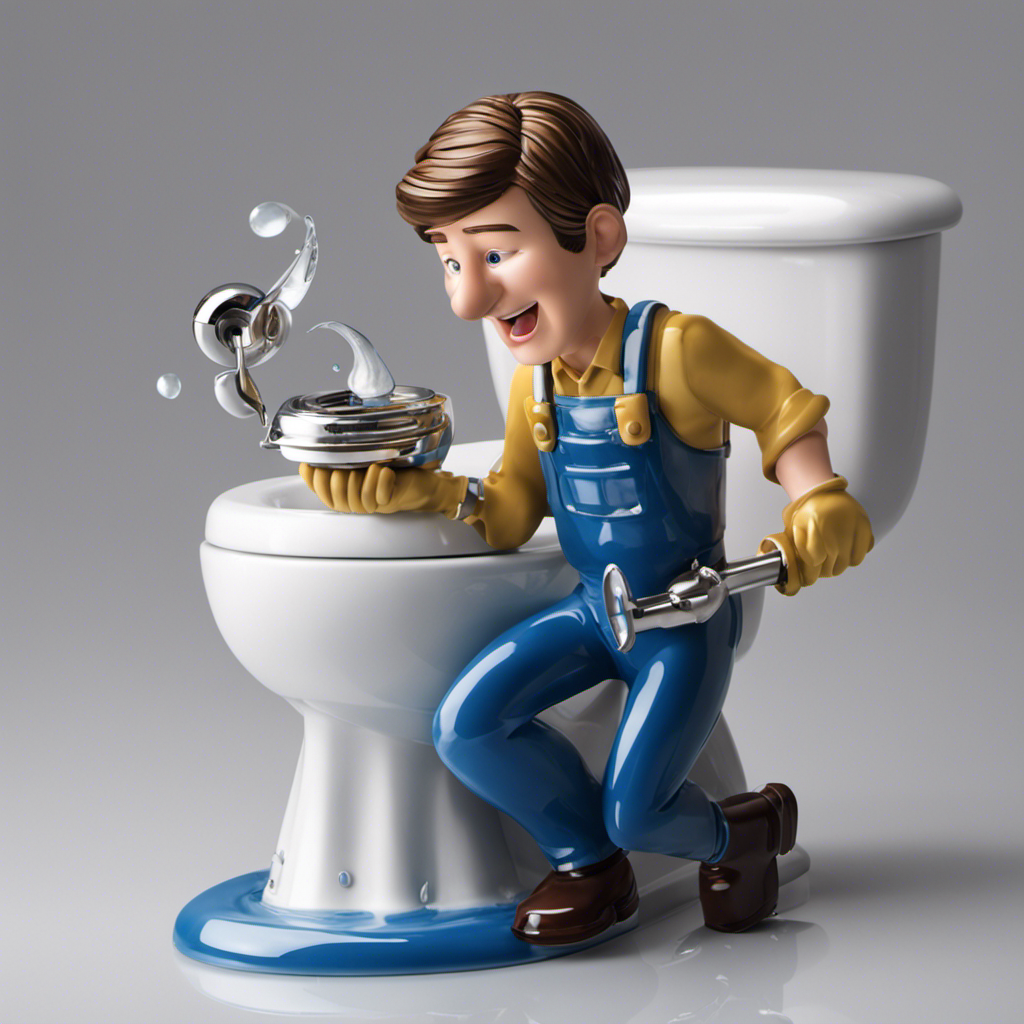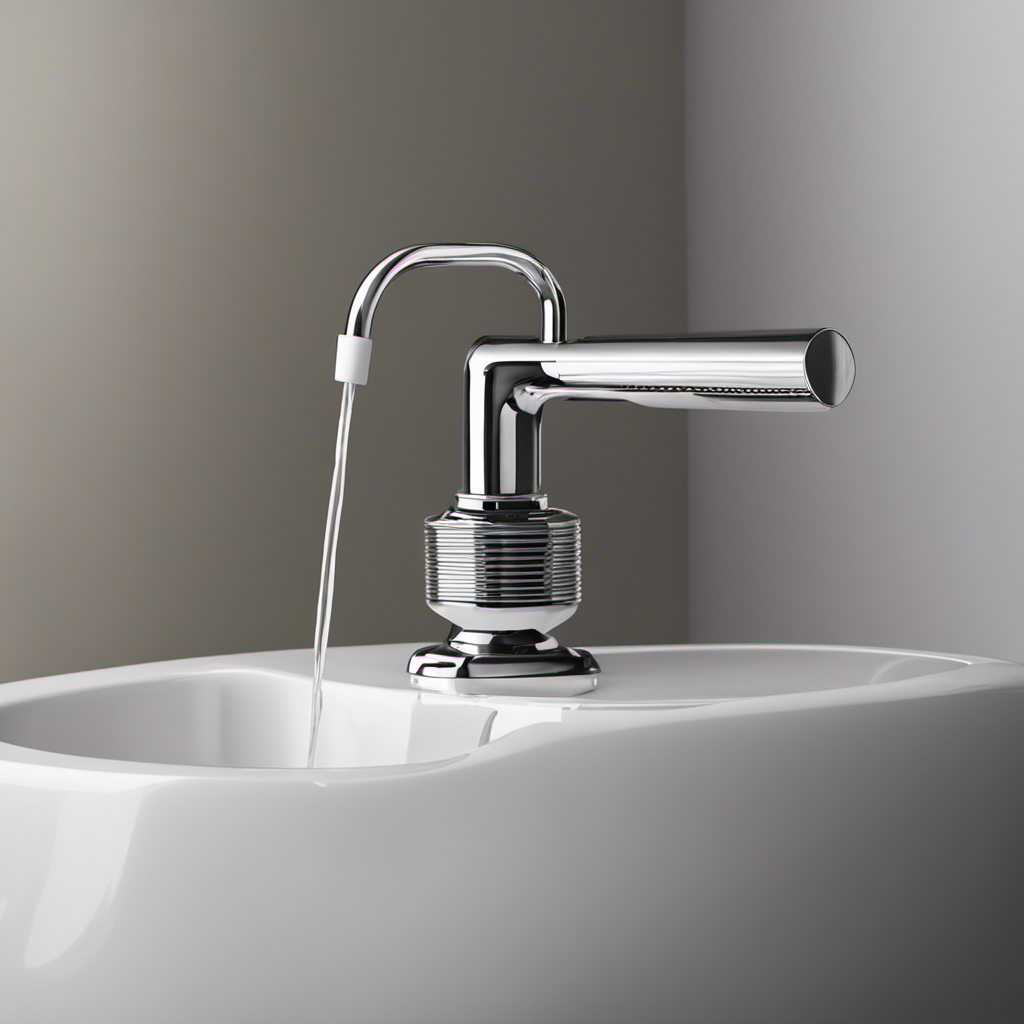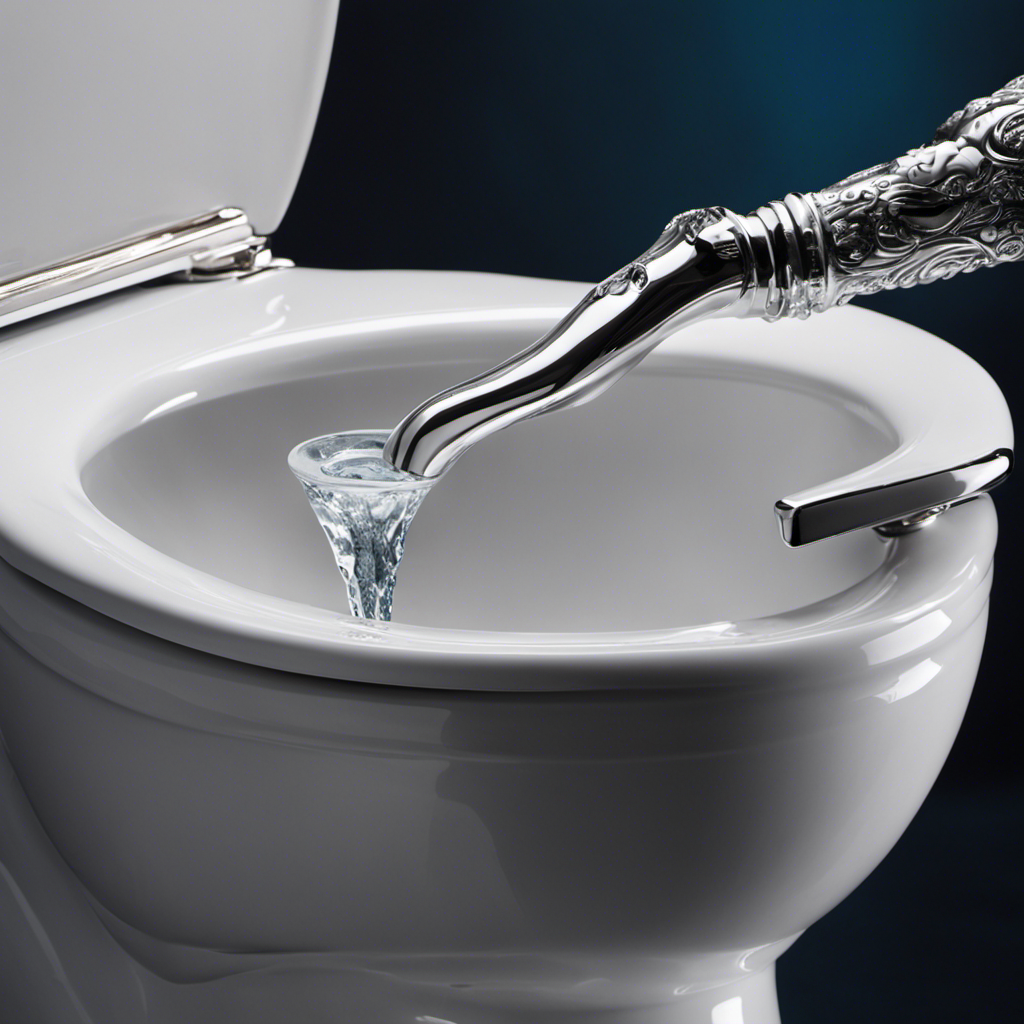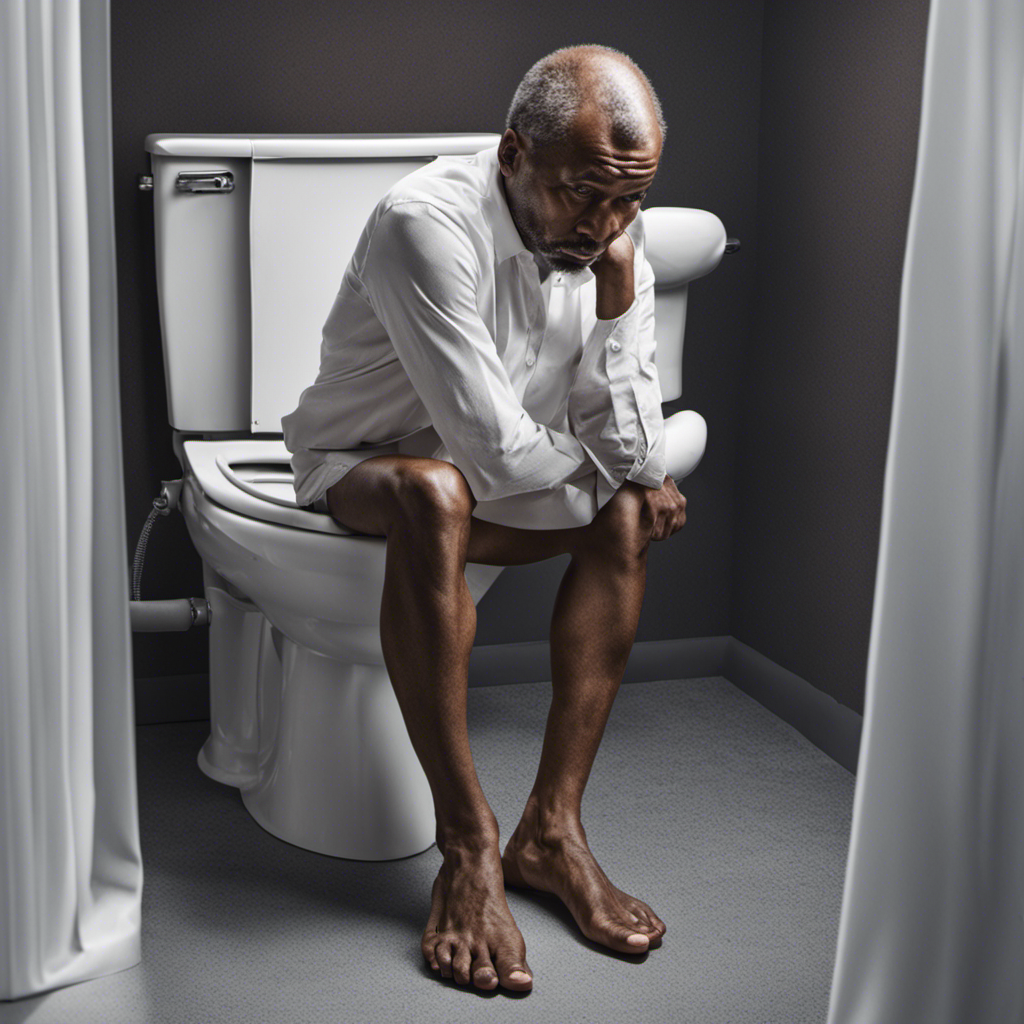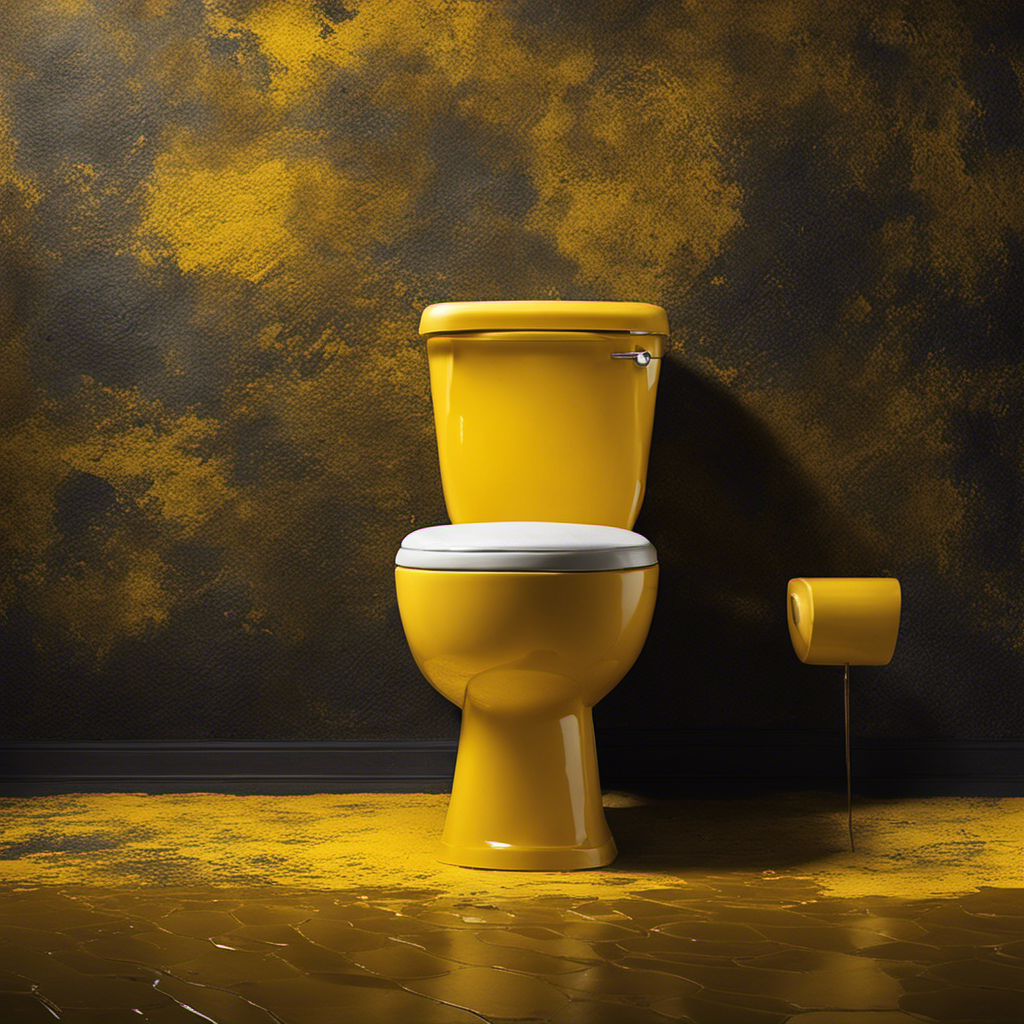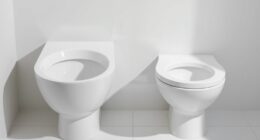Hey there!
Did you know that a whistling toilet can be a real nuisance? If you’re tired of that high-pitched sound every time you flush, then you’ve come to the right place. In this article, I’ll show you step-by-step how to fix that whistling problem once and for all.
From checking the water pressure to inspecting and replacing the fill valve, we’ll cover all the necessary steps to get your toilet back to its quiet self.
So, let’s dive in and get started!
Key Takeaways
- Check the fill valve for proper opening and water level
- Inspect the flush valve for obstructions or damage
- Consider a worn-out or improperly adjusted flapper as a possible cause
- Ensure the water level is at the correct height
Identifying the Cause of Toilet Whistling
To identify the cause of your toilet whistling, you should start by checking the fill valve and the flush valve.
The fill valve is responsible for refilling the tank after each flush, while the flush valve controls the release of water into the toilet bowl. If there is a problem with either of these valves, it can result in a whistling sound.
First, make sure that the fill valve is fully open and that the water level is at the correct height. If the whistling persists, check the flush valve for any obstructions or damage. Sometimes, a worn-out or improperly adjusted flapper can cause the whistling.
Checking and Adjusting the Water Pressure
When it comes to water pressure, there are two common issues that homeowners may encounter: high water pressure and low water pressure.
High water pressure can cause damage to plumbing fixtures and appliances, while low water pressure can be frustrating and affect the functionality of various household tasks.
In this discussion, I will explore the causes of both high and low water pressure, as well as provide tips on how to check and adjust the water pressure in your home.
High Water Pressure
If the toilet is whistling, it could be due to high water pressure. High water pressure can cause the toilet to make a loud whistling noise when it flushes.
To troubleshoot and fix this issue, here are some steps to follow:
-
Check the water pressure: Use a pressure gauge to measure the water pressure in your home. High water pressure is typically considered anything above 80 psi (pounds per square inch).
-
Adjust the water flow: If the water pressure is too high, you can adjust the water flow by installing a pressure reducing valve (PRV) on the main water line.
-
Install a water hammer arrestor: Water hammer, which is caused by sudden changes in water flow, can also lead to toilet whistling. Installing a water hammer arrestor can help alleviate this problem.
-
Check for leaks: Leaks in the toilet’s fill valve or flapper can also cause whistling. Inspect these components for any signs of damage or wear.
-
Seek professional help: If you’re unsure about adjusting the water flow or troubleshooting the water pressure, it’s best to consult a professional plumber.
Low Water Pressure?
Experiencing low water pressure? If you’re dealing with weak water flow in your home, there are a few possible causes to consider.
One common issue is clogged pipes. Over time, mineral build-up, sediment, or debris can accumulate in your pipes, restricting water flow and causing low pressure. To address this, you may need to clean or replace the affected pipes.
Another solution is to increase the flow rate of your water. This can be achieved by adjusting the pressure regulator or opening the main water valve fully. However, be cautious when making adjustments to avoid damaging your plumbing system.
If the problem persists, it’s advisable to consult a professional plumber who can accurately diagnose and fix the issue.
Inspecting and Replacing the Fill Valve
When it comes to maintaining the fill valve in my toilet, there are a few key points I always keep in mind.
First, I make sure to regularly inspect the valve for any signs of damage or wear. This includes checking for leaks, cracks, or any other indications that the valve may not be functioning properly.
If I do notice any issues, I know it’s time to replace the fill valve to ensure optimal performance and prevent any further damage to my toilet.
Valve Inspection Tips
To fix the toilet whistling, you should start by inspecting the valve for any signs of damage or blockage. Valve maintenance plays a crucial role in ensuring the proper functioning of your toilet.
Here are some troubleshooting techniques to help you with the inspection:
- Check for any leaks around the valve.
- Look for mineral deposits or sediment buildup inside the valve.
- Ensure that the valve is properly connected to the water supply line.
- Test the valve by flushing the toilet and observing its performance.
- If necessary, clean or replace the valve to resolve any issues.
Regular valve maintenance is essential to prevent toilet whistling and maintain the overall efficiency of your toilet. By following these troubleshooting techniques, you can effectively identify and resolve any valve-related problems.
Signs of Valve Damage
Regular valve maintenance is crucial to prevent potential damage and ensure the proper functioning of your toilet. When it comes to troubleshooting toilet whistling, it’s important to be aware of the common causes.
A toilet whistle can be caused by a faulty fill valve or a worn-out flapper valve. One sign of valve damage is a high-pitched whistling sound when you flush the toilet. This indicates that there may be a restriction in the valve, causing the water to flow through a smaller opening and create the whistling noise.
Other signs include inconsistent water levels in the tank or the toilet not flushing properly. If you notice any of these signs, it’s time to consider replacing the fill valve to ensure your toilet operates smoothly and silently.
Replacing the Fill Valve
If you’re experiencing a high-pitched whistling sound when you flush, it’s time to consider replacing the fill valve in your toilet. This is a common issue that can be easily resolved by following a few simple steps.
Here’s what you need to do:
- Turn off the water supply to the toilet.
- Flush the toilet to drain the tank completely.
- Disconnect the water supply line from the bottom of the fill valve.
- Remove the old fill valve by unscrewing it from the toilet tank.
- Install the new fill valve by following the manufacturer’s instructions.
Once the new fill valve is installed, you may also need to adjust the float to ensure proper water level and prevent any future whistling noises.
Troubleshooting noises in your toilet can be a hassle, but replacing the fill valve is a quick and effective solution.
Fixing a Loose or Damaged Flapper
Check if the flapper in your toilet tank is loose or damaged. This is a common cause of toilet leaks and flush problems.
To fix a leaking toilet, start by turning off the water supply valve behind the toilet. Flush the toilet to empty the tank.
Inspect the flapper for any signs of wear or damage. If it’s loose, adjust the chain to ensure a proper seal when the flapper closes. If the flapper is damaged, you will need to replace it with a new one. Make sure to choose a flapper that matches the brand and model of your toilet.
Once the flapper is fixed or replaced, turn the water supply back on and test the flush. If the problem persists, move on to troubleshooting other potential issues, such as clearing blockages in the toilet’s pipes.
Clearing Blockages in the Toilet’s Pipes
Clearing blockages in the toilet’s pipes can be done using a plunger or a plumbing snake. It is important to address blockages promptly to prevent further damage to the plumbing system. Here are some steps to follow for clearing blockages and maintaining your toilet:
-
Start by using a plunger: Place the plunger over the drain hole, ensuring a tight seal. Push and pull vigorously to create suction and dislodge the blockage.
-
If the plunger doesn’t work, try using a plumbing snake: Insert the snake into the drain and rotate it to break up the blockage.
-
Regularly clean the toilet to prevent build-up and blockages.
-
Avoid flushing non-flushable items, such as wipes, paper towels, and feminine products, down the toilet.
-
Consider using a toilet auger or calling a professional plumber if the blockage persists.
Seeking Professional Help if the Whistling Persists
To address the persistent whistling sound, you may want to consider seeking professional help from a plumber.
While DIY troubleshooting can be effective in many cases, some toilet whistling issues may require the expertise and specialized tools of a professional.
Plumbers are trained to identify and resolve complex plumbing problems, including those that cause whistling in toilets. They have access to a wide range of alternatives and solutions that may not be readily available to the average homeowner.
Additionally, seeking professional help can save you time and frustration, as they can quickly diagnose and fix the issue.
Conclusion
So there you have it, folks! With these simple steps, you can put an end to that annoying toilet whistling once and for all.
Don’t let the high-pitched sound drive you crazy any longer. Take control of your bathroom and fix the issue like a true DIY expert.
From adjusting the water pressure to inspecting and replacing the fill valve, we’ve covered it all.
And if all else fails, don’t hesitate to call in the professionals.
Happy whistling-free toilet days ahead!
